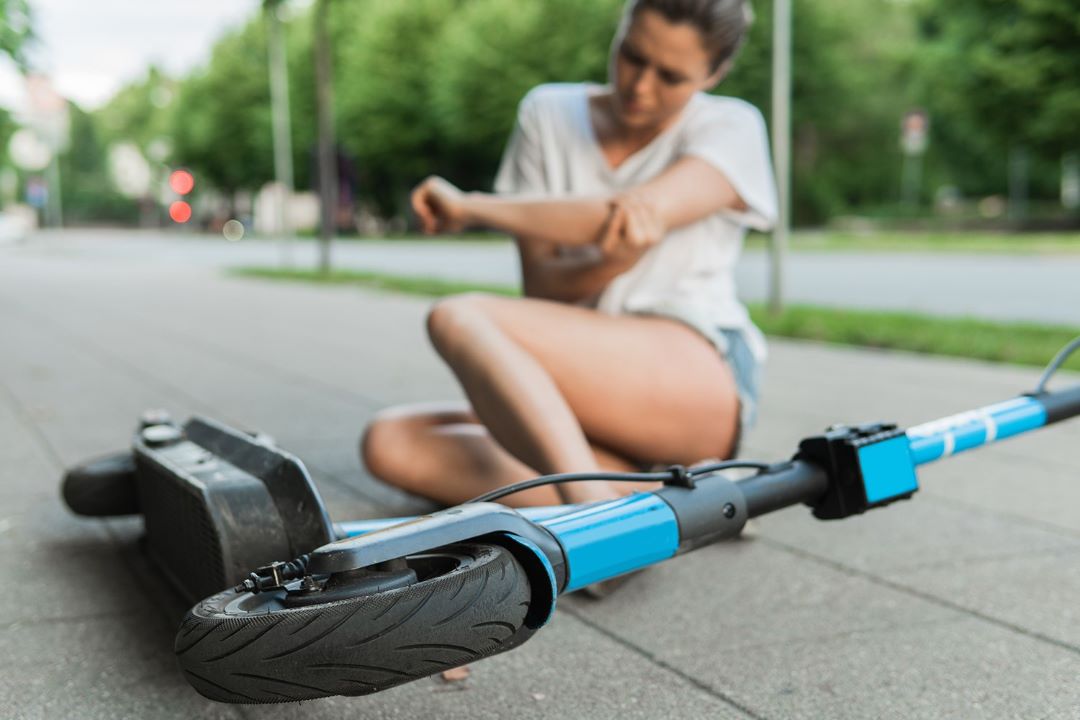Micromobility has become part of daily travel in cities across Ontario. As riders, pedestrians, and motorists share space in dense corridors, collisions increasingly raise questions that do not fit neatly into traditional frameworks for motor vehicles or pedestrians. Determining the right path depends on how the incident occurred and where responsibility lies. That assessment typically considers road user conduct, the condition of the roadway or premises, and, where applicable, the design and maintenance of the device itself.

Where a driver’s negligence contributes to a collision with a scooter or cyclist, fault-based tort claims may be available alongside Ontario’s Statutory Accident Benefits (SABS). Because SABS are tied to the involvement of an automobile, the paperwork and timelines differ from incidents that do not include a motor vehicle. In contrast, if a fall or crash stems from a property hazard, such as uneven paving, debris, or poor lighting, the analysis shifts to occupiers’ liability, focusing on inspection regimes and maintenance records. When the route includes sidewalks, multi-use trails, or municipal roadways, short statutory notice periods can apply, which is why early advice is important. A separate set of rules may be relevant where a device fails due to a manufacturing or design defect; in those cases, product liability principles and evidence preservation become crucial.
Damages must be tied to the loss actually sustained. Depending on the legal avenue, injured people may claim non-pecuniary damages for pain and suffering, income loss or loss of earning capacity, medical and rehabilitation expenses, and out-of-pocket costs. In appropriate circumstances, family members may bring claims for their related losses under Ontario legislation. Where motor vehicles are involved, certain thresholds and deductibles apply to pain-and-suffering damages, which means the factual and medical evidence supporting the claim needs to be carefully developed.
Rental platforms add another layer. App-based fleets often present terms and waivers within the sign-up flow. While some contracts seek to limit liability, enforceability turns on wording, how the terms were presented, and the surrounding circumstances. Even where a waiver exists, duties around maintenance, device safety, and user prompts may continue to be relevant. None of this changes the central point: evidence, photos, device condition, location data, treatment notes, and witness accounts drives outcomes more than assumptions about which contract applies.
Ontario uses a comparative-fault approach. If multiple parties share responsibility, such as a rider travelling too fast on a crowded path while a driver turns without signalling, the law apportions fault and reduces damages proportionately. Not wearing a helmet does not automatically defeat a claim, but it may be raised as contributory negligence in some cases. Because limitation periods and municipal notice deadlines can be short, documenting the event and obtaining timely legal guidance helps protect rights that might otherwise lapse.
One practical list to save and share (Ontario):
- Seek medical attention promptly and follow the treatment plan;
- Photograph the scene, the device (and helmet), and surface conditions;
- Collect names and contact details for witnesses and note any cameras;
- Preserve rental records, app screenshots, and the device without repairs;
- Notify relevant insurers quickly, especially if a motor vehicle was involved.
Frequently asked questions
Do rental waivers stop every claim?
No. Waiver enforceability depends on the clause itself, how clearly it was presented, and the facts of the incident. Duties relating to maintenance or product safety may still be examined.
Can I access benefits if no car was involved?
SABS generally require automobile involvement. If a car was not part of the incident, recovery may proceed through tort, occupiers’ liability, product liability, or other insurance.
How long do I have?
Many Ontario civil claims have a general two-year limitation period, but some notices—particularly municipal—can be much shorter. Timely legal advice helps preserve claims.
What if I am partly at fault?
Fault can be shared. Your compensation may be reduced by your share of responsibility rather than eliminated entirely.
Is social media relevant?
Yes. Posts and videos may be reviewed and compared to medical evidence. Limiting public commentary about the incident is prudent.

Put Your Health First and Your Evidence in Order
After a micromobility incident, medical care and documentation are just as important as the device you preserve and the photos you take. Ontario’s rules can involve overlapping pathways; SABS where a motor vehicle is involved, occupiers’ or municipal liability where conditions played a role, or even product liability when equipment fails. Early, organized steps help ensure the right benefits are explored and critical timelines are met.
A Clear Plan for Uncertain Moments
If you’re unsure whether a waiver applies, whether notice is required, or how damages are calculated, you’re not alone, these cases turn on details. A focused legal review can clarify duties, preserve the strongest evidence, and map next steps without overcommitting to outcomes. The goal is simple: protect your recovery options while you focus on healing.
Injured on an e-scooter, shared bike, or other micromobility device in Ontario? Our Personal Injury team can review your situation, clarify potential claims and notice periods, and outline practical next steps.


